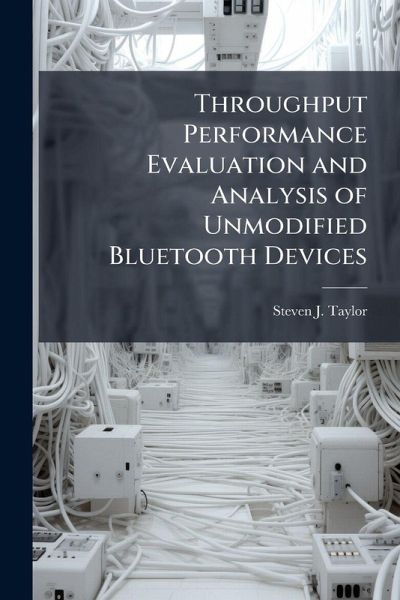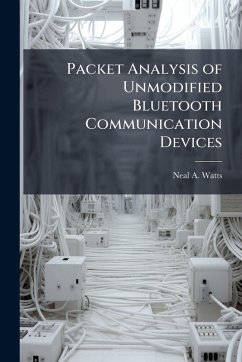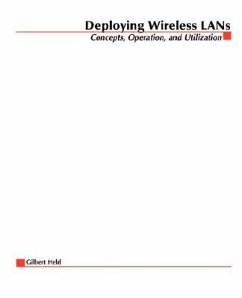
Throughput Performance Evaluation and Analysis of Unmodified Bluetooth Devices
Versandkostenfrei!
Versandfertig in über 4 Wochen
15,99 €
inkl. MwSt.
Weitere Ausgaben:

PAYBACK Punkte
8 °P sammeln!
The Air Force relies on the application of new technologies to support and execute its mission. As new technologies develop, the integration of that technology is studied to determine the costs and benefits it may provide to the war fighter. One such emergent technology is the Bluetooth wireless protocol, used to connect a small number of devices over a short distance. The short distance is a feature that makes using the protocol desirable. However short, there is still a vulnerability to interception. This research identifies ranges at which several commercially available Bluetooth devices ar...
The Air Force relies on the application of new technologies to support and execute its mission. As new technologies develop, the integration of that technology is studied to determine the costs and benefits it may provide to the war fighter. One such emergent technology is the Bluetooth wireless protocol, used to connect a small number of devices over a short distance. The short distance is a feature that makes using the protocol desirable. However short, there is still a vulnerability to interception. This research identifies ranges at which several commercially available Bluetooth devices are usable. Various combinations of both distance and orientation are varied to determine a 360 degree map of the Bluetooth antenna. The map identifies distances at which certain throughput thresholds are available. This research shows that baseline 1 mW Bluetooth antennas are capable of throughput levels of 100 kbps at over 40 meters, which is four times the minimum distance specified in the protocol standard. The 3Com PC card was the best performing PC card, capable of throughputs at or near 100 kbps out to 40 meters. The other PC Cards tested had similar performance. The Hawking USB dongle was the best USB antenna tested, achieving throughputs of over 200 kbps in three of the four orientation, and over 150 kbps at the fourth. The 3Com dongle was a close second, the Belkin dongle a distant third, while the DLink antenna was not able to achieve 100 kbps at any distance tested. This work has been selected by scholars as being culturally important, and is part of the knowledge base of civilization as we know it. This work was reproduced from the original artifact, and remains as true to the original work as possible. Therefore, you will see the original copyright references, library stamps (as most of these works have been housed in our most important libraries around the world), and other notations in the work. This work is in the public domain in the United States of America, and possibly other nations. Within the United States, you may freely copy and distribute this work, as no entity (individual or corporate) has a copyright on the body of the work. As a reproduction of a historical artifact, this work may contain missing or blurred pages, poor pictures, errant marks, etc. Scholars believe, and we concur, that this work is important enough to be preserved, reproduced, and made generally available to the public. We appreciate your support of the preservation process, and thank you for being an important part of keeping this knowledge alive and relevant.












